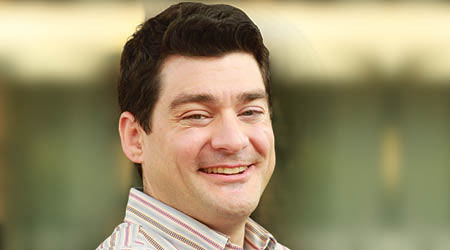
I’ve been known to refer to myself as a professional tree hugger, which is really just shorthand for using my engineering background to make the world a better place. I was doing this long before I had children, but the presence of smaller Petruzzis certainly adds to my daily inspiration.
Thinking back on my upbringing, when my parents and grandparents did things to conserve or stretch resources, it was called “common sense” and it made an impression (or was impressed) upon me. Conserving and appreciating resources, though, does require being aware of their use.
Let’s look at utilities such as electricity and water. When someone is paying a fixed amount, regardless of how much he or she uses, this very frequently leads to excessive consumption. For example, guests at a hotel may be inclined to take lengthier showers that would empty their hot water tank and raise their monthly bill if taken at home. Or for a tenant who pays the same rent each month, regardless of the amount of energy or water they use, there is little incentive to use less.
This leads facilities to put together a package of energy-efficient devices and water-efficient fixtures with timers and motion sensors to reduce the “human factor” and hopefully reduce overall consumption. Unfortunately, resources devoted to facility cleaning are also sometimes lumped into the “reduce consumption” mode.
One of the big conundrums of building cleaning is that it is an expectation of tenants and building management that tends to suffer from a lack of visibility (especially if done well). Since cleaning the facility fully depends on the human factor, there’s a benefit to having custodial staff more visibly contribute to energy and water-saving efforts, and emphasize the value provided by cleaning.
Simple actions can include reporting drips and leaks observed while cleaning to maintenance staff quickly and, if the cleaning schedule permits (e.g., after business hours), ensuring manually controlled lighting or equipment is turned off appropriately.
Going beyond simple, cleaning staff can work with facility management to communicate the benefits of their green cleaning program to building occupants. Specifically emphasize that the department is using effective cleaning products that have fewer negative human health impacts. Point out that vacuums and other powered equipment have reduced noise levels and high efficiency systems for dust capture to improve the indoor environment.
We all loved show-and-tell day at school, so consider holding one in the lobby, or during a building-wide event to showcase the green products, equipment and cleaning staff. It would be a chance to share some features and benefits of the green cleaning products and let people try using a microfiber mop or ergonomic backpack vacuum. All of these efforts can help dispel some of the misperceptions held by non-jan/san people and accentuate the importance of daily cleaning for health (which they probably don’t do at home).
Few people cover the footprint of a building as often or as widely as the cleaning staff, so bringing positive attention to their daily sustainability contributions — not just when there’s cleanup needed — is only common sense.
MARK PETRUZZI is Senior Vice President of Outreach and Strategic Relations with Green Seal. He’s in his third decade of striving for more sustainable purchasing and operations by using his engineering powers for good.

 Celebrating BSCAI's 60th Anniversary eBook
Celebrating BSCAI's 60th Anniversary eBook The Down and Dirty on Cleaning in Virus Season
The Down and Dirty on Cleaning in Virus Season How Surfactant Use is Expanding in Commercial Cleaning
How Surfactant Use is Expanding in Commercial Cleaning